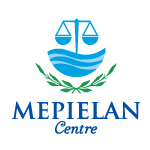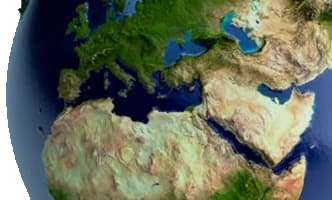After a decade and a half of negotiations, the UN member states reached agreement on the establishment of the landmark treaty to conserve and sustainably use the marine biological diversity in areas beyond national jurisdiction (BBNJ treaty) in the context of the resumed fifth session of the Intergovernmental Conference (IGC 5-2).* The IGC 5-2 took place from 20 February to 4 March 2023 at UN Headquarters in New York with the mandate to deal with the numerous issues that had been left pending at the conclusion of IGC-5 in August 2022.
The High Seas Treaty is the third implementing Agreement concluded under UNCLOS and is expected to close governance gaps on the protection of marine biodiversity in high seas. In effect, the newly-adopted treaty addresses four key topics related to area based management tools (ABMTs) including marine protected areas (MPAs), environmental impact assessments (EIAs), marine genetic resources (MGRs) as well as capacity building and transfer of marine technology.
One of the most important components of the new treaty is that it allows the countries to establish large-scale marine protected areas on the high seas, thus paving the way for the implementation of the Kunming-Montreal Global Biodiversity Agreement committing countries to protect at least 30% of Earth’s oceans and to have restoration completed or underway on 30% of degraded areas by 2030.** In this context, it is to be that through his Spokesperson, Mr. Guterres said “The treaty is crucial for addressing the triple planetary crisis of climate change, biodiversity loss and pollution.” He added that “It is also vital for achieving ocean-related goals and targets of the 2030 Agenda for Sustainable Development, and the Kunming-Montreal Global Biodiversity Framework.”
Another significant component of the new treatment is that it reflects global minimum standards on conducting environmental impact assessments (EIAs) for planned activities in ABNJ or for activities within national jurisdiction that may have harmful impacts in ABNJ. Particularly, the new treaty outlines a detailed process for carrying out an EIA consisted of the following four steps: (i) screening, (ii) scoping, (iii) impact assessment and evaluation, and (iv) prevention, mitigation, and management of potential adverse effects.
Moreover, equity issues related to the benefit sharing of the marine genetic resources and issues related to capacity building and transfer of marine technology emerged as a contentious topic in the negotiations. Envisaging that the activities related to marine genetic resources are in the interests of all the states and the humanity, the new treaty will establish a fair and equitable regime for the access and the sharing of both monetary and non-monetary benefits stemming from the utilization of marine genetic resources and digital sequence information. Moreover, it was decided that the developing countries will be supported in the participation and the implementation of the treaty through the facilitation of capacity-building and the transfer of marine technology. For this purpose, a fund will be set up accepting financial contributions from public and private sources. It will also collect the financial gains from the utilization of the marine genetic resources.
Finally, the countries will meet again to formally adopt the treaty which will enter into force upon achieving 60 ratifications. To be added, the UN chief in the statement issued by his Spokesperson said: “This action is a victory for multilateralism and for global efforts to counter the destructive trends facing ocean health, now and for generations to come.”
*The draft BBJN Agreement can be found here: https://www.un.org/bbnj/sites/www.un.org.bbnj/files/draft_agreement_advanced_unedited_for_posting_v1.pdf
**More information on Kunming-Montreal Global Biodiversity Agreement can be found here: https://www.cbd.int/article/cop15-cbd-press-release-final-19dec2022
Sources: UNEP, European Commission, IMO, IISD
For further information:
https://sdg.iisd.org/news/countries-reach-agreement-to-conserve-and-sustainably-use-high-seas/
https://enb.iisd.org/marine-biodiversity-beyond-national-jurisdiction-bbnj-igc5-resumed-summary
https://www.cbd.int/article/cop15-cbd-press-release-final-19dec2022
MS
About the author

MEPIELAN Centre
MEPIELAN Centre is an international research, training and educational centre established by Professor Evangelos Raftopoulos at the Panteion University of Athens in 2008.
Before its establishment as a University Centre, MEPIELAN operated as a successful international research, training and informational programme (2002-2007) under the scientific direction of Professor Evangelos Raftopoulos and the aegis of the Panteion University of Athens, supported by the Mediterranean Action Plan/UNEP and the Greek Ministry of the Environment, Physical Planning and Public Works.
MEPIELAN Centre is an accredited UNEP/MAP PARTNER (since 2013), a Member of the Mediterranean Commission on Sustainable Development (MCSD) (since 2016), and a Member of the Steering Committee of the MCSD (since 2019).
On 22 May 2022, MEPIELAN Centre proceeded to the development of MEPIELAN as a Non- Profit Civil Organization (INGO) for the more effective and efficient advancement of its Goals and Missions and furtherance of its activities. MEPIELAN Centre as a Non- Profit Civil Organization (INGO) is registered in Greek Law (Hellenic Business Registry, Reg. No. 16477300100) in accordance with Laws 4072/2012 & 4919/2022 as applicable


